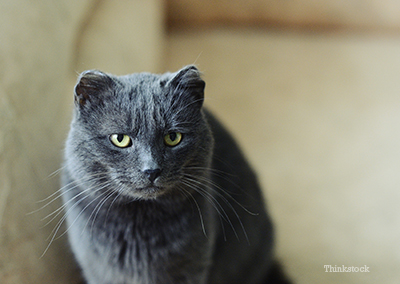
Few infectious diseases of cats have the emotional and physical impact of feline retrovirus infections, more commonly referred to as Feline Immunodefficiency Virus (FIV) and Feline Leukemia Virus (FeLV). The incidence of FeLV and FIV is significant. The American Association of Feline Practitioners reports that in a study of 18,000 cats, “2.3% were positive for FeLV and 2.5% were positive for FIV!”
Are FeLV and FIV newly recognized diseases?
These viruses have existed for an unknown time. They likely mutated from a related virus of another species. FeLV has been recognized since the mid-1960s and FIV was first recognized in the mid-1980s.
How are FeLV and FIV spread?
Direct transfers of bodily fluids, such as saliva, are needed to transmit both of these infections from cat to cat. FeLV is typically spread during friendly behaviors like grooming or sharing common food and water bowls. FIV is primarily transmitted via deep punctures and scratches during fighting where saliva from an infected cat enters the body.
Both diseases can be slow to develop and clinical signs arrive at varying times after infection. Both viruses may be found in cats that are seemingly healthy and free of clinical symptoms. Although FIV is not always fatal in cats, it can produce carrier states that spread the disease for years.
My cat lives inside, does he need to be tested for FeLV and FIV?
Many cat guardians consider their cat an indoor cat because he sleeps in the house or spends very little time out of doors. The fact is that a cat should be considered indoors if he is indoors only or confined to a completely enclosed exercise area. Any free run of the yard or even walking on a leash means your cat is at least somewhat outdoors. If your cats have a gift for escaping through an open door or window, they are at risk. If you have multiple cats and even one of them spends time out of doors, they are all susceptible to the risks of being out of doors to some degree. Finally, if you foster raise stray or orphan kittens in your home, you effectively bring the outdoors in. There is also the possibility that for some reason in the future your indoor cat will become an outdoor resident. All of these factors place your cat at a degree of risk.
Fighting between cats is a particularly risky behavior since exchanges of body fluids and bite wounds are common in catfights. Testing newly acquired and at risk cats should be based on the recommendation of your veterinarian but with consideration of the risk factors discussed. Because the exposure history of newly acquired cats and kittens may be unknown, all should be tested for a possible preclinical or carrier state.
Is my cat at risk of FeLV and FIV?
In the case of FeLV, young kittens are susceptible to infection in part because the virus can be transmitted from infected mother cats. Young cats are at greatest risk of infection if exposed but older cats may become infected as well. All kittens over 8-weeks of age should be tested when first presented for vaccinations.
FIV is not quite so black and white, but all cats should be tested when acquired. The greatest risk of infection is in male cats known to get in fights or any cats with bite wounds or abscesses.
Are there vaccines to protect my cat from FeLV and FIV?
Vaccines for FeLV and FIV are available and aid in the prevention of retrovirus infections. However, they are not 100% effective in preventing infection and decisions about vaccinating should be discussed with your veterinarian. Guardians of cats vaccinated against FIV should understand the fact that their cat will test positive in the future. Once vaccinated for FIV, future tests will be positive because of the vaccine. Therefore, interpreting a positive test in a cat that has been vaccinated is nearly impossible. Always listen to the advice of your veterinarian.
Both you and your veterinarian have the best interest of your cat at heart. In short, these diseases are largely preventable and there is no down side to testing cats for feline retrovirus infections.
You are encouraged to review the AAFP vaccination guidelines.
Click here to learn more about symptoms and treatment of FeLV.
If you have any questions or concerns, you should always visit or call your veterinarian -- they are your best resource to ensure the health and well-being of your pets.
